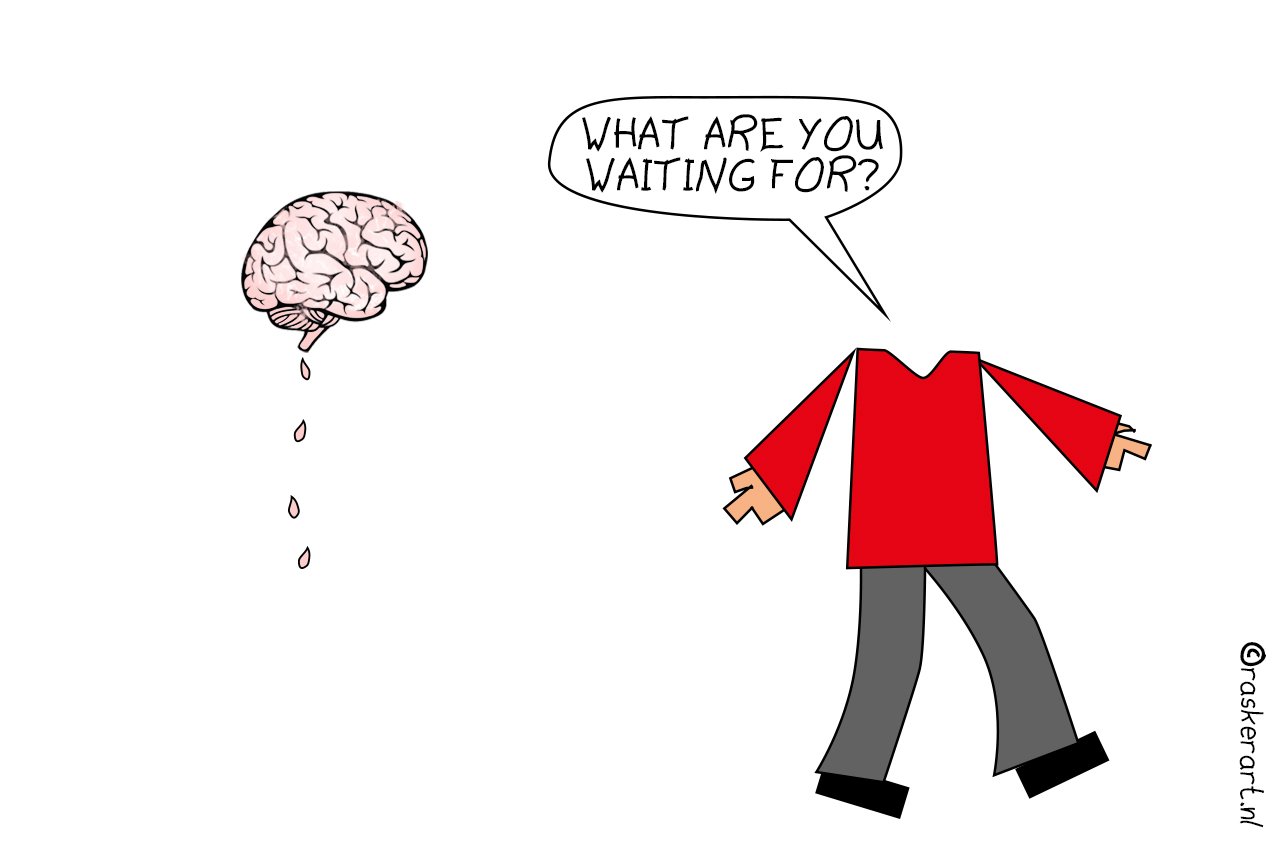
“The real innovation, of course, is in preventing or curbing the disease,” says Ronald van Broekhoven, physiotherapist and founder of Parkinson’s Expertise Center West-Brabant in The Netherlands. More and more is known, such as the research from the University of Utrecht, which we featured last week. And that, for example, the intestines play an important role. “But most innovations are focused on dealing with the symptoms of the disease,” he says.
These can be helped with medication, but also by getting people to consciously move. For people with Parkinson’s, it is sometimes a real problem to start moving, as in start walking. “That doesn’t automatically happen anymore,” he says. “If you make people with Parkinson’s very aware of it, they can manage,” Van Broekhoven explains. “For example, by putting a stick in front of them, then they step over it. We call that a cue; a trick to fool the brain.”
Everyone has their own set of symptoms
He and his fellow physical therapists primarily treat people with Parkinson’s in his practice. “It’s a complex disease and no two patients are the same. Each patient has their own set of symptoms that they suffer from the most. Some deteriorate faster and develop a kind of dementia while others don’t do that at all.”
Which is why Van Broekhoeven works with a Parkinson’s disease-specialized nurse, neurologist, occupational therapist, dietician, speech therapist, psychologist and rehabilitation specialist. He also takes part in research projects such as Smart Glass. This uses augmented reality to project an imaginary walking stick onto the ground that people have to step over. “People only saw white and black blocks. That was dangerous, so it remained a prototype.”
Cues
Other props to “fool” you are shoes, walkers or canes with lasers. A laser light projects a line on the ground that the patient then steps over. Or auditory cues, such as headphones or a walker with a metronome. Van Broekhoven: ” Even with that, you can also make someone aware that they need to take a step.”
For a long time, Parkinson’s was thought to be a disease of the musculoskeletal system, says Monique Bosman, chair of the Patient Association of the Dutch Parkinson’s Advisory Council, and a Parkinson’s patient herself. “Many people know the motor problems such as twitching and rigidity. That’s just the tip of the iceberg.”
Visible, motor symptoms are tremors, a mask-like facial expression – as in a stiffened face-, cramping and tics. But there are around 29 less visible symptoms such as difficulty concentrating, forgetfulness, only being able to do one thing at a time, fatigue, depression, anxiety, voice problems, loss of smell, lethargy, apathy, constipation and sexual dysfunction. A kind of Parkinson’s dementia can also develop, Bosman sums up. “Often these invisible symptoms are even more disturbing to the person and those around them.”
Different each day
Research into Parkinson’s disease focuses primarily on motor symptoms, Bosman continues. “The non-motor symptoms are also even more difficult to measure.” Like Van Broekhuizen, Bosman emphasizes that no two Parkinson’s patients are the same: Differences in symptoms and differences in the speed at which the symptoms worsen. This is not only related to medication, but also to the day, temperature, level of stress and fatigue, as Bosman knows from experience. “For example, this morning I had no tremors at all and now I’m shaking like crazy. And … yes it is also time for my medication again. I have an alarm clock for that.”
Because the progression of the disease varies so much from one individual to the next, it is difficult to measure whether a drug really works, Bosman explains. You also have to measure over a certain period of time, while the disease develops in the brain for years before it is diagnosed. Bosman developed her first symptoms ten years before a neurologist made the diagnosis.
Parkinson’s was first defined about two hundred years ago. “It’s only been fifty years that we’ve had the drug Levodopa,” she says. This drug helps the brain make dopamine. It suppresses symptoms, although it does not cure Parkinson’s, Bosman emphasizes.
Participant
There is a lot of research into the cause of Parkinson’s disease, Bosman knows from her interest and her role as chair of the advisory board. The Parkinson’s Association boosts annual grants to foster research. “We also keep track of what research is going on in the Netherlands and abroad. There are so many researchers who continue to search tirelessly for the possible causes and solutions.”
Bosman herself also takes part in some research studies. Her ultimate goal is: “To get Parkinson’s out of my life – or after my life – to get Parkinson’s out of the world,” she writes on her website. Such as in the European study FairPark II on the drug Deferipron, which flushes out excess iron. “Perhaps earlier removal of waste products will make brain cells less likely to die off.”
Or the Track PD study at Maastricht UMC, in which an extra-powerful MRI scan measures what happens in the brain while doing specific tasks and at rest. The underlying questions here are whether you can use an MRI scan of the brain to diagnose Parkinson’s in someone and whether different groups of patients also show different types of changes on the MRI scan.
Deep Brain Stimulation
In addition to research aimed at finding the cause, innovations are also being developed to improve existing treatment methods. For example, inhaling Levodopa whenever it’s needed very quickly, Bosman says. Or improving advanced methods that suppress motor impairments, such as Deep Brain Stimulation. A technique in which electrodes are placed in the brain. “There’s a specific part of the brain that you can turn off which stops tremors from occurring,” he goes on to say. “The innovation that this technique involves is that we want to make this kind of stimulation interactive, so that the electrodes only turn on when tremors are imminent. Not that it keeps on continuously stimulates the spot in the brain as it does at the moment.”
Because Parkinson’s is a brain disease and not a physical problem, your legs do work but you can’t get them to work, Bosman explains. “That’s also why people sometimes can’t walk but they can ride a bike. Or climb stairs, they can do that.” Like Van Broekhoeven, Bosman cites cues as a way to help people become aware of their movement as one example of an innovative approach.
“People with Parkinson’s sometimes think they can be understood. While for the outside world that’s not the case.” This is where the Voice Trainer can help, for instance. An app that shows what your voice is doing: When you speak loudly or softly and when it is the right sound. Bosman: “That app prompts you to make your voice louder.”
‘Compensation strategies’
People also come up with their own “compensation strategies” for their walking disorder, Bosman says. Like walking while bouncing a ball, visualizing that you are holding a line in your hands, or pretending to skate. Researchers at the Radboudumc catalogued these strategies and Marina Noordergraaf made a poster of them.
Bosman: “These are all examples of innovation that deal with symptoms. This does not put an end to the problem, but it does help to live a better quality of life for longer.”



